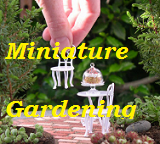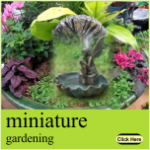Hydroponics is a method of growing plants using mineral nutrient solutions instead of soil. Terrestrial plants may be grown with their roots in the mineral nutrient solution only or in an inert medium, such as perlite, gravel or mineral wool. A variety of techniques exist. Plant physiology researchers discovered in the 19th century that plants absorb essential mineral nutrients as inorganic ions in water.
 In natural conditions, soil acts as a mineral nutrient reservoir but the soil itself is not essential to plant growth. When the mineral nutrients in the soil dissolve in water, plant roots are able to absorb them. When the required mineral nutrients are introduced into a plant’s water supply artificially, soil is no longer required for the plant to thrive. Almost any terrestrial plant will grow with hydroponics, but some will do better than others. It is also very easy to do; very young children often undertake the activity with such plants as watercress. Hydroponics is also a standard technique in biology research and teaching and a popular hobby.
In natural conditions, soil acts as a mineral nutrient reservoir but the soil itself is not essential to plant growth. When the mineral nutrients in the soil dissolve in water, plant roots are able to absorb them. When the required mineral nutrients are introduced into a plant’s water supply artificially, soil is no longer required for the plant to thrive. Almost any terrestrial plant will grow with hydroponics, but some will do better than others. It is also very easy to do; very young children often undertake the activity with such plants as watercress. Hydroponics is also a standard technique in biology research and teaching and a popular hobby.
Passive hydroponics, semi-hydroponics or passive sub irrigation is a method of growing plants without soil, peat moss, or bark. Instead an inert porous medium transports water and fertilizer to the roots by capillary action. Water and fertilizer are held in a reservoir and conducted to the roots as necessary, reducing labor and providing a constant supply of water to the roots. In the simplest method, the pot sits in a shallow solution of fertilizer and water or on a capillary mat saturated with nutrient solution. Since routine maintenance is much simplified, passive hydroponics can reduce the labor required to maintain a large collection of plants.
The various hydroponics media available contain more air space than more traditional potting mixes, delivering increased oxygen to the roots. Allowing air to reach the roots is particularly important in preventing root rot in epiphytic plants such as orchids and bromeliads, whose roots are exposed to the air in nature. Passive hydroponics also may add additional ambient humidity through evaporation. It is important in passive sub irrigation to wash out the system from time to time to remove salt accumulation. Plants that require drying between watering or a dry dormant period may fail to thrive under the constant moisture of passive hydroponics.
You may also like to read:
Different Types Of Plants For Indoor Container Home Garden
The Innumerable Underwater Species
Piranhas are more savage than sharks
Can animals predict weather?
Israel Finds Natural Gas Treasure
Scientists predict earthquake in US
